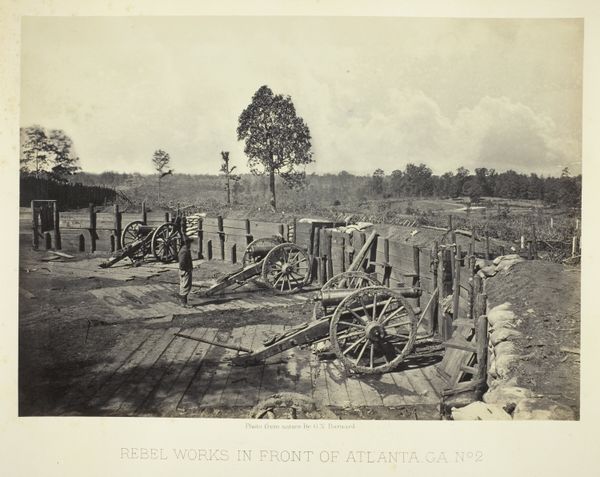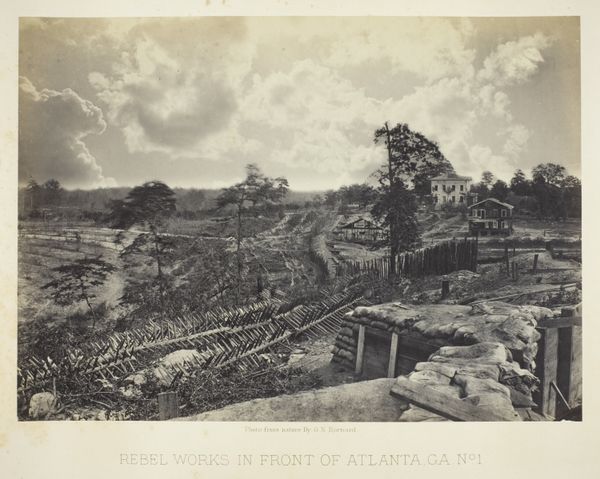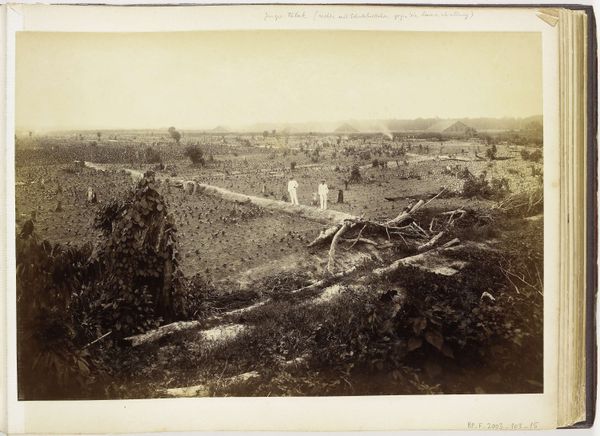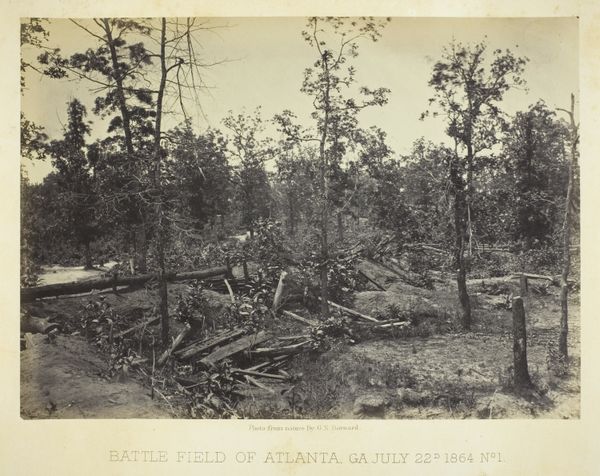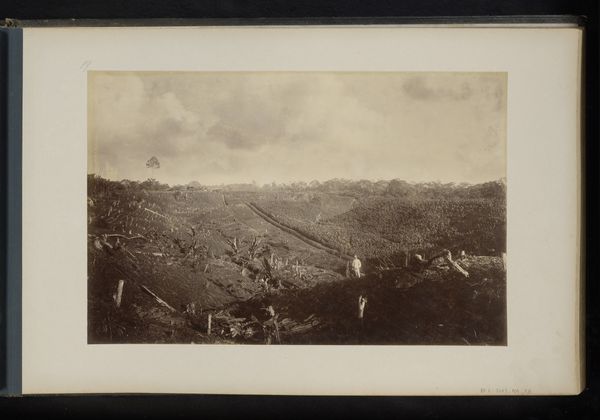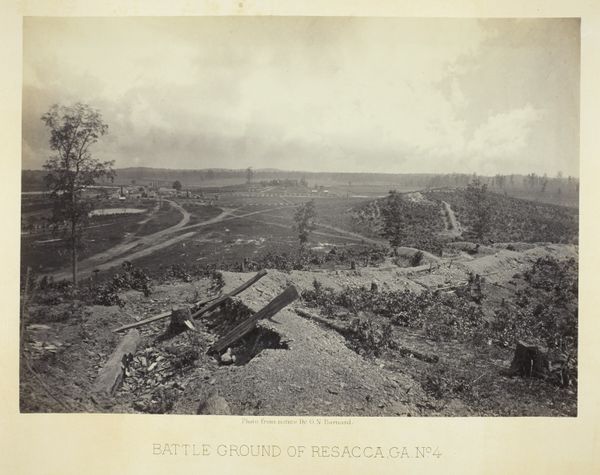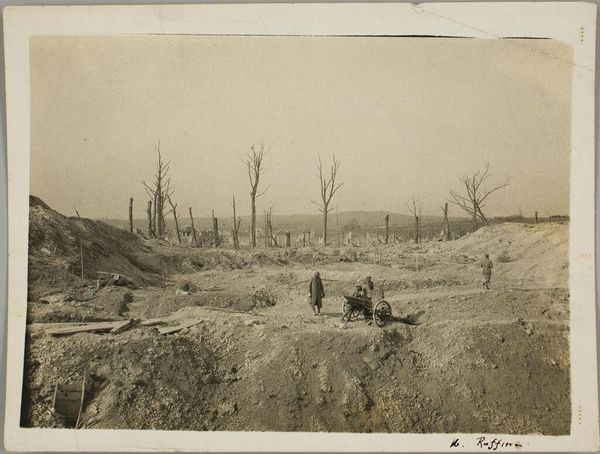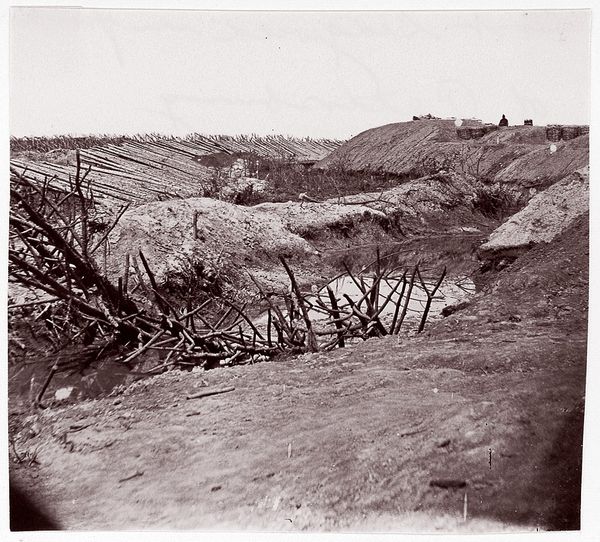
photogram, print, photography, albumen-print
#
16_19th-century
#
photogram
# print
#
war
#
landscape
#
photography
#
united-states
#
history-painting
#
albumen-print
Dimensions: 25.5 × 36.1 cm (image/paper); 41 × 51 cm (album page)
Copyright: Public Domain
Editor: Here we have George N. Barnard’s "Battle Field of Atlanta, GA, No. 2," an albumen print dating to July 22, 1864. The stark landscape feels eerily still, despite its violent history. How do you interpret this work? Curator: It's a powerful image precisely because of that stillness. Barnard isn't just presenting a landscape; he’s offering a commentary on the aftermath of war. Think about the power dynamics at play here. Photography during the Civil War, particularly these battlefield images, served to both document and shape public perception. Who gets to tell the story? What is emphasized or omitted? Editor: So, it's about more than just documentation. Curator: Absolutely. Consider the visual language. The barren landscape, the remnants of fortifications – these are potent symbols. What do they evoke for you in terms of the lived experiences of those most impacted by the conflict - enslaved people, soldiers, civilians? This photograph aestheticizes a profound and painful transformation. It asks us to reflect on the human cost of progress, and the uneven distribution of its benefits. Editor: I hadn't thought about the act of documentation itself being a form of rhetoric. Curator: Precisely. Even the choice to call it a “battle field” is a choice. It focuses on military conflict and erases the presence, struggles, and resistance of the enslaved population. This work invites us to question whose narratives are privileged and how historical trauma continues to resonate in the present. Editor: That gives me a lot to consider, particularly about the intersection of photography, power, and historical narrative. Curator: Indeed. By examining the social context and historical implications of such photographs, we can foster a deeper, more critical engagement with the past.
Comments
No comments
Be the first to comment and join the conversation on the ultimate creative platform.
